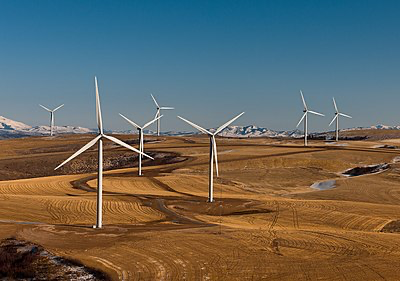South Africa is facing a dual challenge of transitioning to cleaner energy sources and cushioning the impact on communities dependent on coal mining. But one coal producer is taking a bold step to address both issues by building the country’s largest wind farm.
Seriti Resources, a major supplier of coal to state-owned power utility Eskom, has started construction of a 155-megawatt wind farm near its New Denmark mine in Mpumalanga province. The project, which will create up to 800 jobs, is expected to be completed in the first quarter of 2026.
The wind farm will not only reduce Seriti’s carbon footprint but also help diversify its revenue streams and hedge against the uncertainty of coal demand in the future. According to Seriti’s head of green energy, Peter Venn, the company plans to build an infrastructure capable of providing 900 megawatts of green energy over the next few years.
“We see ourselves as an energy company, not just a coal company,” Venn said in an interview at the Indaba mining conference in Cape Town. “We want to be part of the solution, not part of the problem.”
Seriti’s initiative is part of a broader trend of coal miners investing in renewable energy projects in South Africa and beyond. Anglo American, for example, has announced plans to develop a solar power plant to supply its Mogalakwena platinum mine, while Exxaro Resources has partnered with Tata Power to explore opportunities in the green energy sector.
These moves are driven by a combination of factors, including rising environmental and social pressures, falling costs of renewable technologies, and growing opportunities for power generation and supply in a country plagued by frequent blackouts.
South Africa, which relies on coal for more than 80% of its electricity, has committed to reducing its greenhouse gas emissions by 28% by 2030 and achieving net zero emissions by 2050. To achieve this, the government has set a target of increasing the share of renewable energy in the power mix from 5% to 24% by 2030.
However, the transition to a low-carbon economy poses significant challenges for the coal industry, which employs about 90,000 people and accounts for 3.5% of the country’s GDP. The government has established a Just Transition Office to coordinate the development and implementation of policies and programs to support the affected workers and communities.
Seriti’s wind farm project is an example of how the coal industry can contribute to the just transition by creating new jobs, generating clean power, and supporting local development. Venn said the project will also benefit the surrounding communities by providing electricity, water, education, and health services.
“We are not just building a wind farm, we are building a legacy,” he said.
Source: Mining.com



